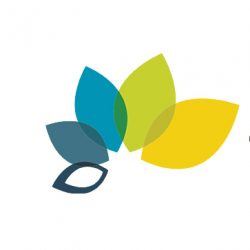Learning Objectives
By the end of this lesson, you will be able to:
- Describe the importance of open copyright licenses for OER
Introduction
Open licenses such as Creative Commons (CC) support knowledge sharing and collaboration by granting copyright permissions in an easy-to-understand, interoperable way. Without open licenses, a great deal of time and resources would be required to create one-off copyright agreements between creators and those would wish to collaborate or build on existing work. CC licenses were created to make it easy for anyone to grant copyright permissions broadly, for others to use without having to ask each time. Open licenses help grease the gears of collaboration by making it clear what you can and cannot do with the creative work of others.
Attribution
A foundation aspect of open licenses like CC is that attribution, or credit, is required for any reuse. This means that anyone reusing your work will need to make reasonable effort to provide full attribution to you if they reuse your work. This is often displayed in the caption of an image, the credits of a film, the footer of a webpage. What creators often care about most is that they receive credit for their work, and all CC licenses require attribution.
Conditions
Creative Commons (CC) licenses come in six flavors, ranging from the most open Creative Commons Attribution (CC BY) license to the least open (CC BY-NC-ND). At the core of every license is the Attribution (BY) requirement, and these additional terms have been combined into licenses that share you work with different conditions for reuse:
- Share-Alike (SA): All derivative work(s) must be shared with the same license
- Non-Commercial (NC): Commercial use rights are not given
- No-Derivatives (ND): The work can be shared, but only if it remains unchanged
Note: The ND Creative Commons licenses are not considered “OER licenses” because they do not allow customization or modification.
Permissions
Copyright restricts use of our creative work without expressed permission from the creator or copyright owner, and there hasn’t always been an easy way to grant permissions to others. Open licenses take care of this for us, telling others how they can used our work in terms that are easy to understand — and that are interoperable with OER that carry similar licenses. David Wiley is well known for having coined the “5 R Activities[footnote]http://www.opencontent.org/definition/[/footnote],” which are an easy way to understand the permissions associated with content that is OER.
Retain – the right to make, own, and control copies of the content (e.g., download, duplicate, store, and manage)
Reuse – the right to use the content in a wide range of ways (e.g., in a class, in a study group, on a website, in a video)
Revise – the right to adapt, adjust, modify, or alter the content itself (e.g., translate the content into another language)
Remix – the right to combine the original or revised content with other material to create something new (e.g., incorporate the content into a mashup)
Redistribute – the right to share copies of the original content, your revisions, or your remixes with others (e.g., give a copy of the content to a friend)
If you are working with content that cannot be involved in the 5 R activities, you may not be working with OER.
Interoperability
CC licenses were designed in a way to allow straight-forward mixing of content that carry different licenses. The important thing to note here is that standardized licenses such as Creative Commons makes content easier to combine and remix legally, whereas custom agreement and contracts have very limited interoperability and would require a great deal of effort to customize to each potential sharing or collaborative arrangement.

